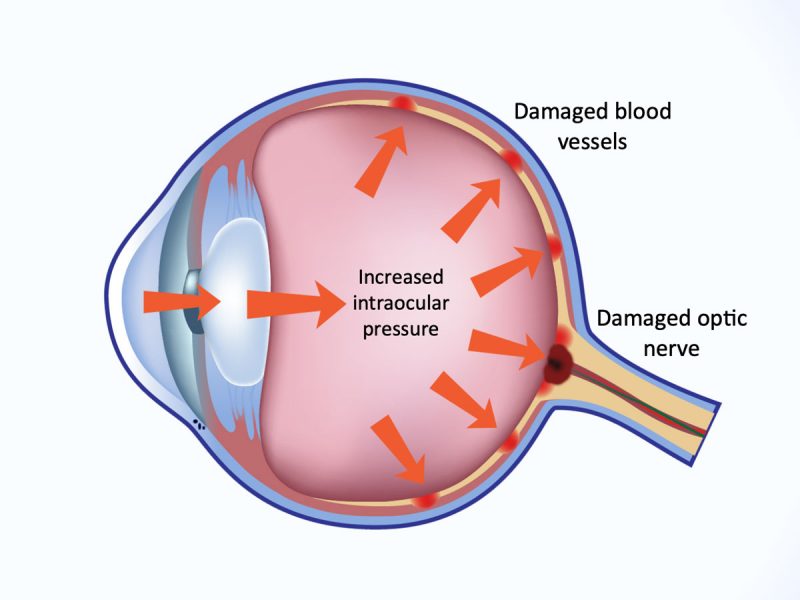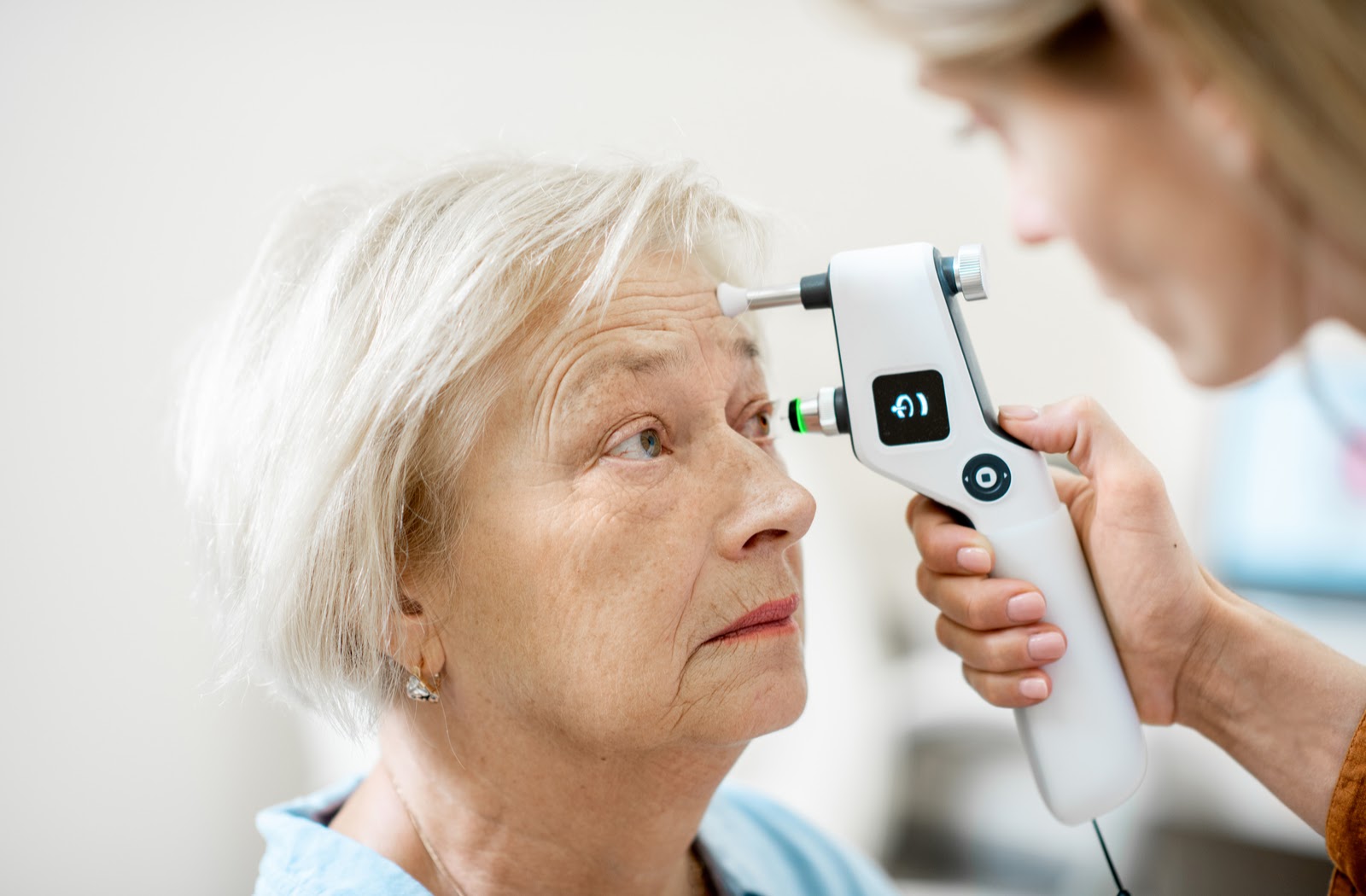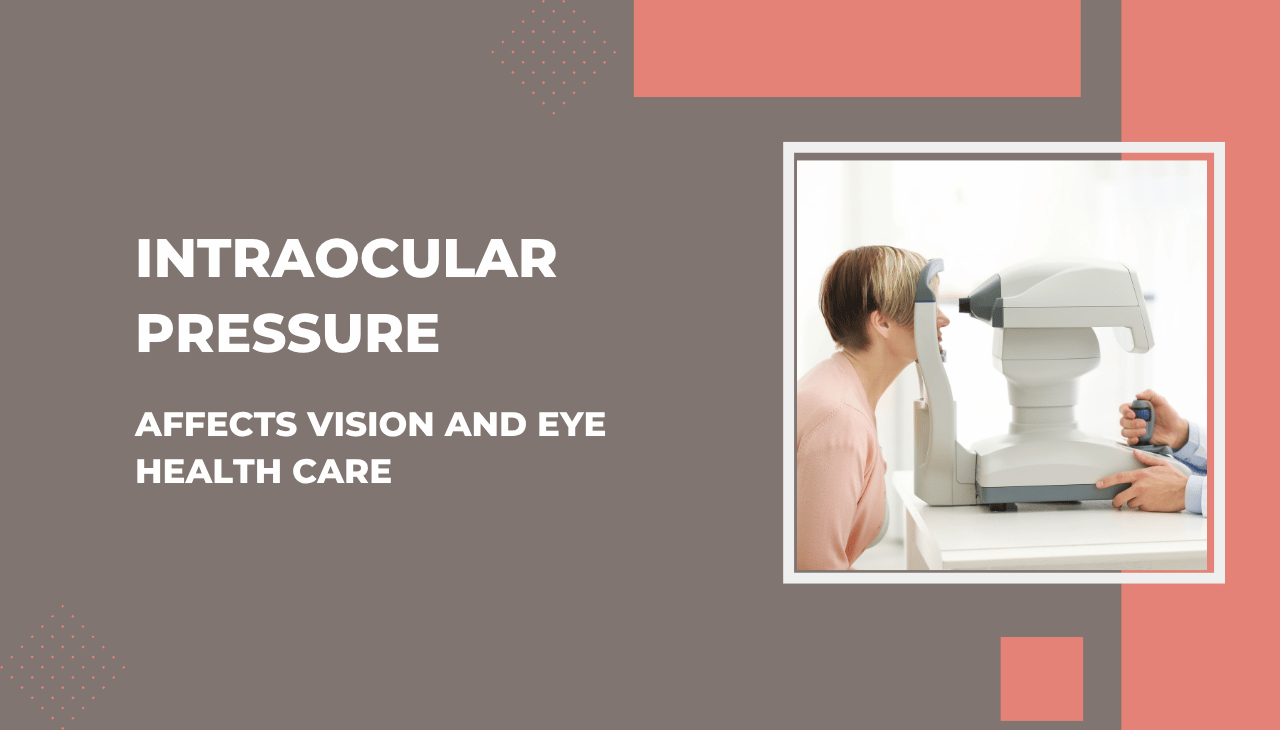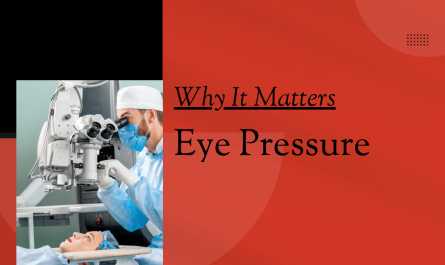Introduction
Have you ever felt pressure in your eyes or been told during an eye exam that your eye pressure is high? This pressure, known as intraocular pressure (IOP), plays a major role in keeping your eyes healthy. When it’s not in the normal range, it can silently damage your vision.
In this blog, you’ll understand what intraocular pressure is, why it matters, what causes it to rise or fall, how it affects your eye health, and what treatments or habits can help manage it. Whether you’ve been diagnosed with eye pressure issues or are simply curious, this guide is for you.
What Is Intraocular Pressure (IOP)?

Intraocular pressure is the fluid pressure inside your eye. Your eye constantly produces a clear fluid called aqueous humor. This fluid flows in and drains out through channels in the eye. When this balance is disrupted—either due to overproduction or poor drainage—pressure builds up.
Normal IOP ranges between 10 to 21 mmHg (millimeters of mercury). If your pressure consistently goes above this range, it could lead to damage.
Your eyes rely on a stable pressure to maintain their shape and to support the function of the optic nerve—the key link between your eye and brain.
Why High Intraocular Pressure Matters
Elevated IOP doesn’t cause pain or obvious symptoms in its early stages. But over time, high pressure can damage the optic nerve. This condition is known as glaucoma.
Glaucoma is one of the leading causes of irreversible blindness. What makes it tricky is that people may not notice vision changes until significant loss has occurred.
Damage from high IOP happens gradually, starting with peripheral (side) vision. By the time central vision is affected, a large portion of vision may already be lost.
Key consequences of unchecked high IOP include:
- Optic nerve damage
- Progressive vision loss
- Blind spots in the visual field
- Eventual complete blindness if untreated
What Causes Intraocular Pressure to Rise?
There isn’t a single reason for raised IOP. Some common factors include:
a. Poor Drainage
When the eye’s drainage system (trabecular meshwork) doesn’t function well, fluid builds up.
b. Eye Injury
Trauma to the eye can affect fluid production or drainage, leading to pressure changes.
c. Steroid Use
Long-term use of steroid medications, including eye drops or oral forms, may raise eye pressure.
d. Medical Conditions
Diabetes, hypertension, and other systemic conditions can increase your risk.
e. Genetics
Family history plays a significant role. If a close relative has glaucoma, regular IOP checks are important.
How Low Eye Pressure Affects Eye Health
Low intraocular pressure is less common but can also be harmful. It usually results from an eye injury, surgery, or inflammation.
If the pressure drops too much (typically below 5 mmHg), the eye can lose its shape, and the retina or optic nerve may be affected. This can lead to:
- Blurred vision
- Retinal detachment
- Reduced visual function
- Damage to the internal eye structures
How Is Eye Pressure Measured?
Your eye doctor can measure IOP during a routine eye exam using a test called tonometry. The most common methods include:
a. Goldmann Applanation Tonometry
Considered the gold standard, this method flattens a small part of the cornea to measure pressure.
b. Non-contact Tonometry (Air Puff Test)
A puff of air is used to flatten the cornea briefly, giving a quick IOP estimate.
c. Tono-Pen
A handheld device that gently touches the eye to get a reading.
None of these tests are painful. They’re fast, safe, and essential for early detection of eye problems.
Managing and Treating Intraocular Pressure
If your IOP is high or fluctuating, your eye doctor will recommend a treatment plan based on the cause, risk level, and eye health.
a. Prescription Eye Drops
These reduce pressure by either decreasing fluid production or improving drainage.
b. Oral Medications
Used in more severe cases or when eye drops aren’t enough.
c. Laser Therapy
Laser trabeculoplasty helps open up the drainage channels in the eye.
d. Surgery
Procedures like trabeculectomy or implanting drainage devices may be required for advanced cases.
e. Regular Monitoring
IOP can change over time. Regular eye exams and pressure checks help manage risks early.
Everyday Tips to Keep Eye Pressure in Check

While treatment is key, your daily habits also make a difference:
- Avoid excessive caffeine
- Exercise regularly (but avoid inverted yoga poses)
- Don’t skip eye check-ups
- Manage underlying conditions like diabetes and high blood pressure
- Wear protective eyewear to prevent injuries
Consultation at Laxmi Eye Hospital
Laxmi Eye Hospital is one of the largest chains of eye hospitals in Mumbai. Known for its dedication to excellence in eye care for over 30 years, it’s trusted by thousands of patients.
At Laxmi Eye Hospital, transparency, skilled eye specialists, and advanced diagnostic technology are the foundation of care. From basic vision testing to complex treatments for glaucoma or retina disorders, the hospital offers everything under one roof at affordable costs.
It also has one of the longest-running cataract surgery training programs and fellowship training for ophthalmologists.
You can consult Laxmi Eye Institute for specialized treatments including:
- Specs Removal / LASIK (Bladeless LASIK, ICL, IPCL, Contoura Vision LASIK)
- Cataract
- Glaucoma
- Diabetic Eye Disease
- Cornea Clinic (Keratoconus, Eye Donation, etc.)
- Retina Treatment
- Pediatric Ophthalmology
Clinic Locations:
Laxmi Eye Clinic (Dombivli)
1st Floor, Laxmi Eye Institute, SS Business Park, Gharda Circle, Azde Gaon, Dombivli East, Mumbai, Maharashtra 421201
Laxmi Eye Clinic (Kharghar)
Office 108, 109, 110, 1st Floor, Anant CHS, Plot 31, Sector 04, Kharghar, Navi Mumbai, Maharashtra 410210
Laxmi Eye Hospital & Institute (Panvel)
Mulla Hamid Rd, Old Panvel, Navi Mumbai, Maharashtra 410206
Laxmi Eye Institute (Kamothe)
Shop No 26/27, Near ICICI Bank, Pratik Gardens, Sector 34, Kamothe, Navi Mumbai, Maharashtra 410209
Book your appointment today and take the first step toward better vision.
FAQs
1. Can high eye pressure be lowered naturally?
Some lifestyle changes like exercise, stress management, and a healthy diet may help, but medical treatment is often needed.
2. Is high intraocular pressure always glaucoma?
Not always. You can have high IOP without nerve damage. This is called ocular hypertension. However, it still needs monitoring.
3. How often should I check my eye pressure?
If you’re over 40 or have risk factors, check every 1–2 years. More frequent visits may be required if you have known issues.
4. Can eye pressure cause headaches or eye pain?
Usually not in early stages. But in acute angle-closure glaucoma, sudden high pressure can cause pain, redness, and nausea.
5. Is low eye pressure dangerous?
Yes, it can harm the retina or optic nerve. Very low pressure should be evaluated and treated promptly.
6. Do all glaucoma patients have high eye pressure?
No. Some people develop glaucoma with normal pressure. This is called normal-tension glaucoma.
7. Will LASIK affect my eye pressure?
LASIK slightly changes corneal thickness, which may affect pressure readings but not actual pressure. Always inform your doctor if you’ve had LASIK.
8. Can I measure my eye pressure at home?
Some portable devices exist, but professional assessment is far more accurate and reliable.
Conclusion
Your eye pressure may not be something you think about daily, but it plays a crucial role in your overall eye health. Unchecked intraocular pressure can lead to irreversible vision loss, but with early detection and the right care, you can protect your sight for years to come.
Stay informed. Keep up with regular check-ups. And don’t ignore changes in your vision. Your eyes deserve attention—because good vision is priceless.


